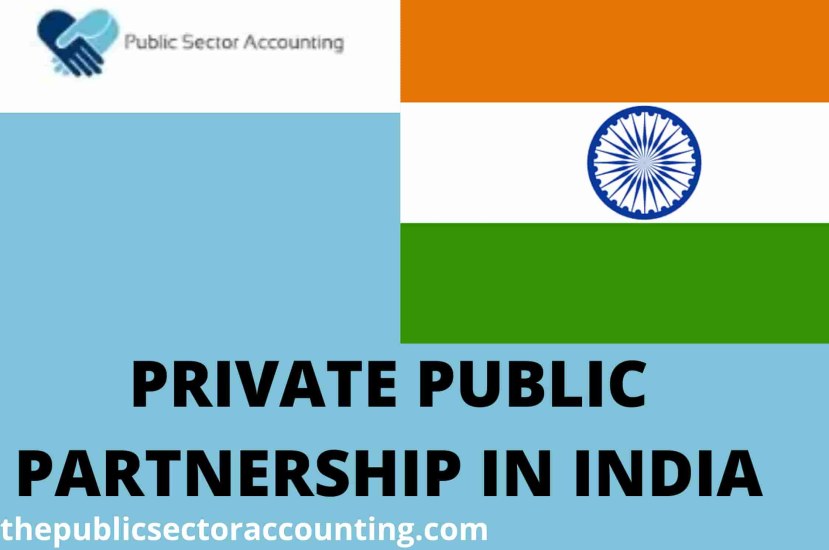Private public partnership in India is the next public sector guide.
The public–private partnership (PPP or 3P) in India is a commercial or informational contractual relationship defined by the government of India in 2011 as “an arrangement between a government/statutory entity/government-owned entity on the one hand and a private sector entity on the other hand, for the provision of public assets and/or public services, through investments made by the private sector entity and/or management undertaken by the private sector entity, for a specified period of time, where there is clearly defined risk.”
Summary of Contents
PRIVATE PUBLIC PARTNERSHIP IN INDIA
This public sector guide is written for India or Indians only.
The Indian government recognizes numerous types of PPPs, including user-fee-based BOT contracts, performance-based management and maintenance contracts, and modified design-build (turnkey) contracts. Hundreds of PPP projects are currently in various phases of execution across the country.
As of November 2020, the government had begun 1,103 PPP projects, totaling $274,959,000,000 in pledged investments.
Through its Department of Economic Affairs’ (DEA) PPP Cell, the Ministry of Finance centralizes coordination of PPPs. The DEA established guidelines for the development and approval of PPP projects in 2011.
This was part of a broader effort to streamline PPP procedures and strengthen the regulatory environment at the national level in order to accelerate the approval of PPP projects, reassure private parties, and encourage them to participate in PPPs in India.
This was one of the primary functions of the Public-Private Partnership Appraisal Committee (PPPAC), which is charged with the appraisal of PPP projects at the national level.
Additionally, the government established a Viability Gap Funding Scheme for PPP projects to aid in ensuring the long-term viability of infrastructure projects.
This program provides financial assistance (grants) to infrastructure projects, typically in the form of a capital grant during the construction phase (up to 20% of the total project).
Additionally, the government established the India Infrastructure Finance Company Limited (IIFCL), which provides long-term debt for infrastructure financing.
IIFCL, which was founded in 2006, gives money to help with transportation, electricity, water, sanitation, communication, and social and commercial infrastructure.
To assist in financing the development costs of PPP projects (which can be significant, particularly the costs of transaction advisors), the Government of India established the “India Infrastructure Project Development Fund” (IIPDF) in 2007. The IIPDF provides funding for up to 75% of project development costs.
Finally, the PPP Cell has developed a number of guidance documents and a “PPP Toolkit” to assist in the planning and decision-making processes associated with PPP projects.
The purpose is to assist in improving decision-making for infrastructure PPPs in India and the quality of developed PPPs. The takeit was created with the goal of assisting decision-makers at the federal, state, and local levels.
India’s infrastructure is deficient in comparison to comparably developed nations. India’s government identified public–private partnerships (PPPs) as a strategy for infrastructure development.
Throughout the 1990s, during India’s initial wave of liberalization, many attempts were made to promote PPPs.
However, it failed in some sectors, such as water and sanitation. India was viewed as being excessively hazardous, and substantial opposition to private sector involvement existed.
The first PPPs were signed and implemented in the early part of the 2000s. Infrastructure development in India demands significant capital expenditures and there is a supply shortage.
Over half of Maharashtra’s key infrastructure development projects are 3P-based. Karnataka, Madhya Pradesh, Gujarat, and Tamil Nadu have also implemented 3P projects.
TYPES OF PUBLIC PRIVATE PARTNERSHIP IN INDIA
- Financially free-standing projects
Role of the public sector
- planning,
- licensing & statutory procedures; no financial support/payment by the government
- Revenues through the levy of user charges by the private sector on toll roads and bridges, telecom services, port projects
- Projects where the government procures services
- The private sector is paid a fee (tipping fee), tariff (shadow toll) or periodic charge (annuity) by the government for providing services; payment against performance
- no/partial demand risk transfer
- Risks associated with asset creation (including design) and O & M transferred to the private sector − Accountability to users for service
- retained by the government
- Roads: annuity, power, under PPAs. In the UK, prisons, education, health services, and defense related services
- Other types: joint ventures, not-for-profit vehicles
PUBLIC PRIVATE PARTNERSHIP IN INDIA EXAMPLES
In August 2012, India’s Prime Minister, Manmohan Singh, lifted a ban on the transfer of government-owned land, simplified land transfer policy, and did away with the need for Cabinet approval for 3P projects in order to speed up the construction of new roads and bridges.
ROAD
Sixty percent of 3P projects are for road construction, accounting for forty-five percent of the 3P project’s monetary worth. They are a component of the project to develop the nation’s highways (NHDP).
The Golden Quadrilateral and the North–South and East–West Corridors are examples of 3P road construction projects. India is converting around 14,000 kilometers (8,700 miles) of its national highways to four-lane highways.
PORTS
Port construction projects account for 10% of all projects and 30% of the value of 3P. Twelve major ports and 185 smaller ports were on India’s roughly 6,000 kilometers (3,700 miles) of coast as of 2011.
Between 2008 and 2011, seaports built on the 3P model improved cargo handling in India by 10%.
[reference required] Port development projects include the Jawaharlal Nehru Port Trust (JNPT) in Mumbai and the Chennai port, which is being developed in collaboration with P & O.
The Indian government anticipates that the National Maritime Development Programme (NMDP) will participate in the 3P process.
WATER
No city in India now provides continuous (24/7) water delivery.
[dubious-debate] Water supply service quality is poor, with non-revenue water accounting for up to 40% in most cities.
The poor are disproportionately harmed by this condition, as they wind up paying more for a liter of water than their more prosperous counterparts.
The government of India encouraged PPPs in the water sector in the 1990s with the goal of increasing access to water services and making them more sustainable.
This initiative, however, failed due to the government’s failure to create an enabling climate for private investment and inadequate project planning. Additionally, there was significant opposition to private sector participation in water distribution.
However, following this first failure, some cities attempted different sorts of PPP arrangements, such as management contracts, a decade later. Risk allocation was more balanced between the public and private sectors.
The public sector first funded a portion of the project and concentrated on efficiency benefits. Policymakers’ and legislators’ perspectives began to shift as well, with a greater appreciation for the function of private sector enterprises and less opposition to their involvement in the water sector.
Both the 2002 and 2012 National Water Policies highlighted the critical role of PPPs in resolving urban water concerns. Between 2005 and 2011, 15 public–private partnerships were formed in the water sector.
Recent failures of water PPPs to deliver have cast doubt on the paradigm.
To begin with, the local community was never consulted about the project, and when information was ultimately released, a public outcry ensued.
Second, significant delays have occurred in the installation and operation of water supply systems. Thirdly, the public purse has been heavily taxed and will continue to be heavily taxed in the future.
An independent committee wrote a very strong report that raised a lot of issues and said that the town’s water supply should be under public control.
PUBLIC PRIVATE PARTNERSHIP IN INDIA PDF
You can download private partnership in India Pdf here for your fether studies.
RISK IN PRIVATE AND PUBLIC PARTNERSHIP IN INDIA
There have been some critics of public-private agreements in India, most notably regarding the hazards connected with such partnerships.
It has been suggested that PPPs are more expensive than typical government procurement processes because of the development, bidding, and ongoing costs of PPP projects. Some have questioned the significance of PPP projects in India in terms of value for money.
The private sector does not supply services that are not expressly specified in the PPP contract. Thus, it is important to make sure that key performance indicators are included in the contract and that the government always checks on the work of the private partner.
Debt also comes with a price, and while the private sector can help people get credit, the customer or the government may have to pay the bulk of this cost.
Another criticism leveled against PPP projects is their potential social and political ramifications. In some cases, for example, a PPP project could lead to public sector employees moving to the private sector, a big rise in tariffs, or problems with moving.
Finally, PPPs are frequently renegotiated. This is because PPP projects are lengthy (may last up to 30 years) and complex.
It’s hard to think of all the things that could happen during the development of a project, so things that weren’t in the contract or the documents may happen that weren’t planned for.
Additional significant disadvantages encountered in 3P projects in India include poorly drafted contracts, a lack of contract understanding, insufficient resources, a lack of managerial experience, contract breaches, team building failures, a lack of performance measures, corruption, and political interference.






Leave a comment